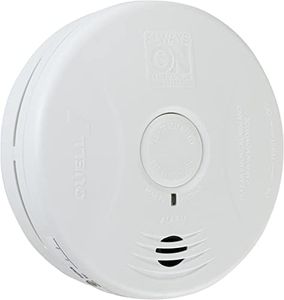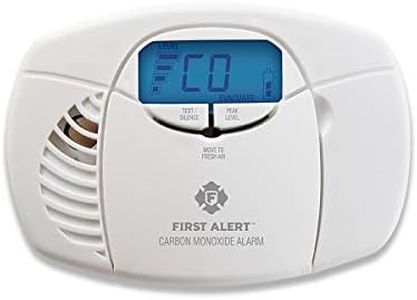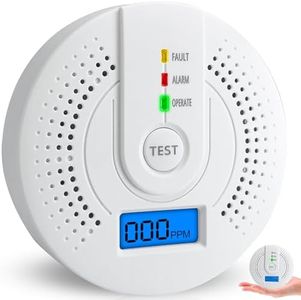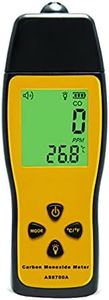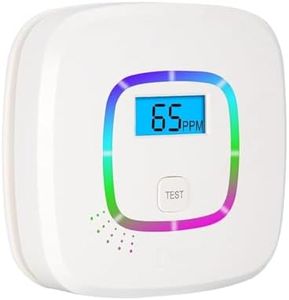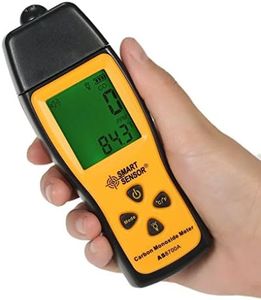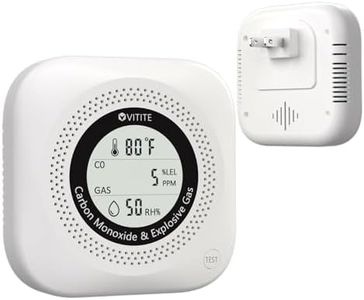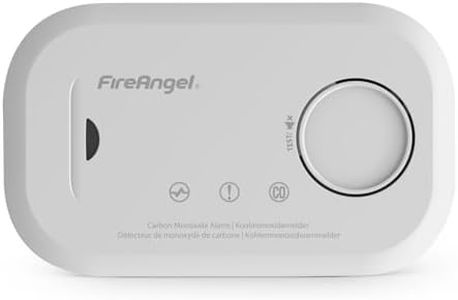We Use CookiesWe use cookies to enhance the security, performance,
functionality and for analytical and promotional activities. By continuing to browse this site you
are agreeing to our privacy policy
10 Best Carbon Monoxide Detectors
From leading brands and best sellers available on the web.Buying Guide for the Best Carbon Monoxide Detectors
When shopping for a carbon monoxide (CO) detector, your goal is to ensure safety by selecting a unit that will reliably alert you to dangerous levels of CO gas in your home. CO is a colorless and odorless gas that can be deadly, so it’s important to pick a detector that fits your home’s needs and your living situation. Understanding the key features helps you make an informed choice that increases your peace of mind and protection for everyone under your roof.Sensor TypeThe sensor in a carbon monoxide detector is the component that detects CO gas. The main types are biomimetic, electrochemical, and metal oxide semiconductor sensors. Biomimetic sensors mimic the effect CO has on hemoglobin in your blood, electrochemical sensors use a chemical reaction to detect CO, and metal oxide semiconductors use changes in electrical resistance. Electrochemical sensors are typically most common and reliable for home use. Consider the longevity and reliability of the sensor type; modern electrochemical sensors are widely chosen for their balance of performance and lifespan, which ideally suits most home users.
Power SourcePower source refers to how the detector receives power. There are battery-operated, plug-in, and hardwired options available. Battery-operated units are versatile and easy to install anywhere, plug-in models simply go into an electrical outlet, and hardwired detectors are connected to your home’s electrical system, often with battery backup. Choose battery-operated if you need flexibility in placement or for older homes, plug-in for ease in homes with abundant outlets, and hardwired if you're adding detectors during renovations or new builds for permanent fixtures.
Digital DisplayA digital display shows the current CO levels in the air, often in parts per million (ppm). This feature can be valuable because it lets you see even small amounts of carbon monoxide before it reaches dangerous levels. Displays can also make it easier to know when the unit is nearing the end of its life or needs service. If you prefer immediate feedback or want to monitor trends, pick a detector with a clear digital display; for those who prefer simplicity, a unit with visual or audible alerts may suffice.
End-of-Life WarningAn end-of-life warning signals when the detector’s sensing mechanism has expired and the unit should be replaced. Since CO detectors don’t last forever (often about 5–10 years), this feature is crucial to ensure continued protection. Detectors without this alert could leave you unknowingly unprotected if the sensor fails. Always look for models that provide a clear end-of-life signal so you can replace your device at the appropriate time.
InterconnectivityInterconnectivity means that several detectors can be linked together. When one senses CO, all interconnected alarms will sound. This is most useful in larger homes or multi-story dwellings, ensuring an alarm is heard no matter where you are. If your home is large, has multiple bedrooms, or you often spend time in remote parts of the house, an interconnected system increases overall safety; smaller homes may not need this feature if a single alarm can be heard everywhere.
Combined Units (CO/Smoke Detector)Some detectors offer carbon monoxide and smoke detection in a single device. Combining both functions can save space and simplify the installation and maintenance process, making it a good option for streamlined safety in homes that have limited outlet space or prefer minimalism. If you want fewer devices in each room or a simplified approach to home safety, consider a dual-function model.
Test and Silence FeaturesMost detectors offer test and silence buttons. Testing ensures the detector is working properly, while the silence button lets you temporarily quiet the alarm (for example, during false alerts while cooking). Regular testing is important for safety, and a convenient silence feature can reduce nuisance alarms. Look for units with accessible, easy-to-use test and silence buttons—especially important for busy households.

